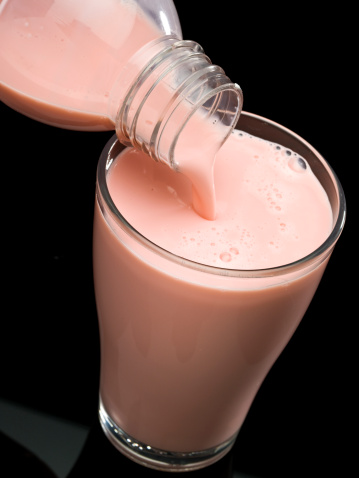The typical dictionary definition of fasting is 1) to abstain from all foods or 2) to eat only sparingly or of certain kinds of food, especially as a religious observance. Few practice the former, at least not for any significant length of time. The second definition, however, has taken many forms, though in modern times weight loss and “detoxing” are more-likely reasons than religious observance.
 Those of a certain age will remember the “protein-sparing modified fasts” of the 1980s, where folks went on a severely calorie-restricted diet of about 400 to 600 calories daily, mostly protein so that they’d be less likely to lose lean muscle mass.
Those of a certain age will remember the “protein-sparing modified fasts” of the 1980s, where folks went on a severely calorie-restricted diet of about 400 to 600 calories daily, mostly protein so that they’d be less likely to lose lean muscle mass.
I worked with one such hospital-based program back then. It involved close supervision, blood monitoring and mandatory attendance at behavior-modification classes.
I remember some patients having a rough time of it, at least at first; such a diet can wreak havoc with one’s daily lifestyle when everything else stays the same and one has social commitments and so on. Still, some participants reported feeling almost relieved after a few days. They had a lot more free time because they didn’t have to worry about shopping for food or cooking or even spending time going out to eat. One protein-sparing fan told me she paid for the monthly program with all the money she was saving by not eating in restaurants.
Rats, Humans and Fasting Research
Severe calorie restriction has been researched in rats and to a lesser extent in humans, not always for weight management but to investigate its effects on longevity and other health measures. A recent review seems to suggest that fasting in some form could have some prudent uses.
A mouse study showed positive effects of intermittent fasting at various ages: researchers reported less visceral fat accumulation (the disease-modulating fat underneath the superficial fat layer), better cognitive performance, even reduced cancer incidence.
This same study included a pilot study of a small number of humans who were placed on what the researchers called a “diet that mimics fasting.” It lasted five days per month, with day one allowing 1,090 calories, decreasing to 725 calories on days two through five. Then the subjects went back to their usual diets. The subjects took vitamin supplements—the idea, after all, was to fast without producing malnutrition. The macronutrient breakdown for both phases of the fast was as follows:
- Day 1: 1,090 calories—10% protein, 56% fat, 34% carbohydrate
- Days 2–5: 725 calories—9% protein, 44% fat, 47% carbohydrate
The “fasting diet” went on for three months. It resulted in decreased risk factors/biomarkers of aging, including diabetes, cardiovascular disease and cancer, while producing no ill effects except maybe a few loud stomach growls. While it’s called “fasting,” it’s really just a low-calorie diet the first day and a very low-calorie, low-protein diet the next four days.
I don’t happen to like the nutrient breakdown, though. It’s very low in protein. Getting about 10 percent of one’s calories from protein is fine for a regular diet, but protein needs are based on body weight and reducing calories doesn’t mean protein needs are reduced.
Ten percent of 1,090 calories leaves you with 109 protein calories, or about 27 grams per day, only about half what an average person would need. I’d advise aiming for at least 220 calories of protein per day, even on a lower-calorie diet; then we can argue about how to split the remaining calories between carbs and fats. There really isn’t much food at either of these calorie levels, so if people want some volume, they’d be better off with fewer fat calories and more high-volume vegetables and some fruit.
Fasting for Kids?
In a word: no. It’s a question I sometimes encounter from parents of the children I see as part of my pediatric nutrition practice at Albert Einstein College of Medicine’s Children’s Evaluation and Rehabilitation Center. When I was in graduate school (many moons ago), the consensus was that children shouldn’t go on low-calorie diets. There were fears about a negative impact on their growth. In the present day, however, if a child were obese, you wouldn’t want that situation to continue. Kids don’t need to fast for weight loss. They just need to follow good diets and move more. It’s kind of the same for adults.
Striking a Balance for Adults
One thing adults might consider: a liquid meal replacement occasionally—for dinner. These tend more commonly to be ingested for breakfast and lunch, with the goal of “eating a sensible dinner.” But since dinner and evening time are when most of the day’s calories are eaten, perhaps having a good breakfast and lunch—daytime is when you need your protein and nutrients the most—and balancing that with a 250-calorie liquid meal replacement for dinner might be beneficial for a few days each month.
One added benefit: you might sleep better with a stomach that’s not so full.


Comments on this entry are closed.
Great ideas here. Liquid diets are very popular right now, but it’s nice to see a professional talking about whether it’s actually beneficial or not. Thanks so much for sharing your insight on this!
Great insight into fasting. I don’t think I would enjoy fasting anyway. I think I’ll stick to working out and portion control. Thanks for sharing!